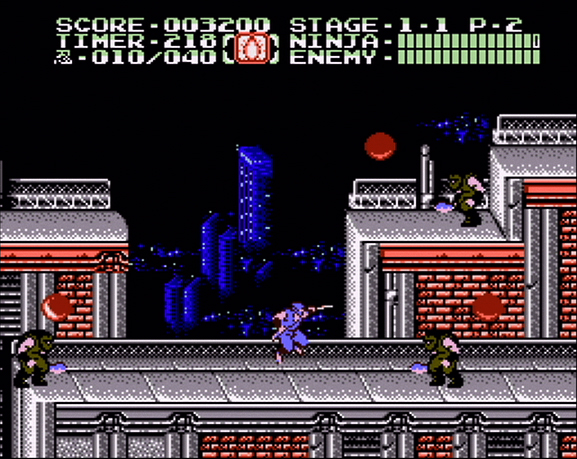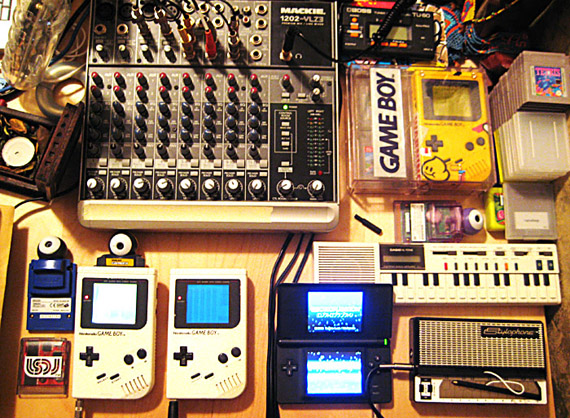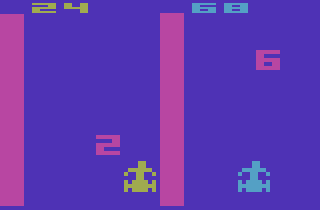If you've
been gaming for around 20 or more years, then you might've notice the evolution
in video-games on all fronts; music, storytelling, graphics, game-play, length,
art styles, connectivity, formats, sound, etc.
The former, one of the most subjective and rich components of video-games,
has found –despite all the improvements in technology- continuously brought
back to its roots.
 But why is
that? Why is that, tunes we have the most fond memories of, are the ones from
our earliest gaming experiences? The
easiest answer could be -nostalgia value-, and it would be partially correct,
but is not that simple. Plenty of us can listen to a track from classic 8 bit
games that haven’t heard before and still like it as much as someone that
listened to it 15 years ago (example♪)… well that’s because is good, duh! (Well, not every
single one). But why is that we gave it that attribute? Not just to a particular
song but to a whole era of this style of music.
But why is
that? Why is that, tunes we have the most fond memories of, are the ones from
our earliest gaming experiences? The
easiest answer could be -nostalgia value-, and it would be partially correct,
but is not that simple. Plenty of us can listen to a track from classic 8 bit
games that haven’t heard before and still like it as much as someone that
listened to it 15 years ago (example♪)… well that’s because is good, duh! (Well, not every
single one). But why is that we gave it that attribute? Not just to a particular
song but to a whole era of this style of music.
The answers
lies within video-game history, specially on its technological limitations, but specially on its technological limitations in sound; Not that long ago (or maybe that
long ago, but I don’t want to admit that I´m getting old) video-games were
composed of the simplest of geometrical shapes, the square (technically they
still are) called pixel, they had the advantage at the time over vector games
for having color proprieties, the more pixels and colors on screen, the more
resources took from the format in which
they came (very limited for today standards). The sound would also take an
important percentage of these formats, to the point that early sounds, -
“sounds” being a generous word here-, were given the role of feedback to the
player, not music whatsoever.
Space invaders is the first game that try implementing musical rhythm with these punishing limitations. And punishing it was, I wouldn't go as far as calling music to 4 notes that repeats over and over; but it was a first try (sample♪).
Before moving further, I consider necessary a mutual understanding that, when gamers refer to 8-bit music, are technically wrong, since we include with this concept, music from NES to turbografx 16 or even neo-geo; right before, or just about the beginnings of the CD format on gaming, many of which weren't 8- bit systems or technically hadn't 8-bit music. But we do so because they all share certain characteristics that composers had to implement in order to include pleasant music in video-games and perhaps the answer to our ladder question.
Space invaders is the first game that try implementing musical rhythm with these punishing limitations. And punishing it was, I wouldn't go as far as calling music to 4 notes that repeats over and over; but it was a first try (sample♪).
 |
| Castlevania Rondo of Blood ♫ (sample) |
Before moving further, I consider necessary a mutual understanding that, when gamers refer to 8-bit music, are technically wrong, since we include with this concept, music from NES to turbografx 16 or even neo-geo; right before, or just about the beginnings of the CD format on gaming, many of which weren't 8- bit systems or technically hadn't 8-bit music. But we do so because they all share certain characteristics that composers had to implement in order to include pleasant music in video-games and perhaps the answer to our ladder question.
 |
| Ninja Gaiden II ♫ (sample) |
By definition the melody is the most recognized part of a song, and fewer
elements made for musical compositions easy to grasp, remember and enjoy.
 |
| Koichi Sugiyama |
Nintendo would maintain the lead in gaming music with its Super Nintendo and created, alongside Sony
and Ken Kutaragi, a sound chip way ahead the competition, that made possible
memorable music (sample♪) with a greater set of tools for composers, that were able to expand on genres (sample♪).
But despite
the hardware advancements, gaming music before the CD media, was consistent on
its own style, at the time composers had developed certain skill to work within
these boundaries and it was more cost efficiently for companies to keep doing
so, at the same time fans had developed a familiarity with it; That, leaded
to a genre, or term called 8-bit music:
Easy to identify pieces with limited synthesized sounds; Music that can be stuck in your head long after the gaming session is done, that enhances the gaming itself and sets a mood for the whole experience or a situation at hand.
 |
| Mario |




Awesome indeed! feels and nostalgia in this post :D
ReplyDelete